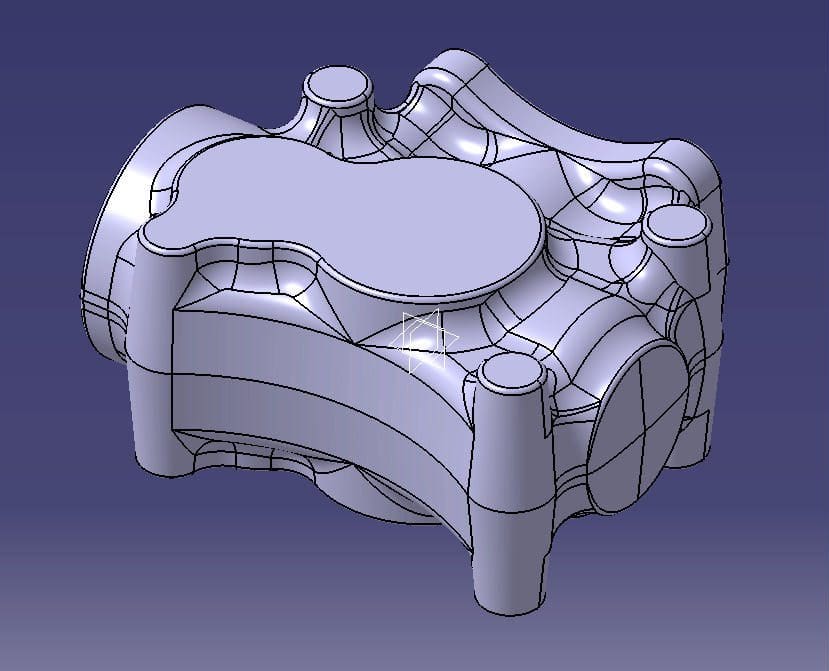Today, hydraulic fracturing is one of the most important and most controversial techniques to bring oil hydrocarbons to the surface. On the one hand, fracking (especially in the U.S.) has significantly lowered energy prices and carbon dioxide emissions by displacing coal in electricity generation. On the other hand, many types of research have already proven the negative impact of the technique on the environment.
The industry professionals emphasize that pollution is usually the result of bad practice and could be easily prevented by an experienced workforce and better solutions. Therefore, key players are continuously trying to improve all machinery and tooling involved in the procedure by investing in innovative solutions and reliable equipment maintenance techniques.
In a nutshell, hydraulic fracturing is an oil and gas well development process used to create fractures in the rock or increase the size, extent and connectivity of existing ones by injecting water, sand and chemicals under high pressure. Natural gas or oil is released through the formed fissures and is drawn back up the well to the surface where it can be collected, processed and refined.
One of the most critical components for the high-pressure injection industry and especially for hydraulic fracturing operations is the fluid end. Subject to extreme environments as pressure, chemicals and slickwater, fluid ends can fail in as little as 100 to 500 pumping hours and their failure can have a dramatic impact of the final outcome of the operation.
Most of the current fluid ends have a monoblock structure and are incorporated into triplex (with 3 pressure plungers) or quintuplex (with 5 pressure plungers). These units are operating sometimes at 300 strokes per minute and this often results in fatigue cracking of the fluid end, benefited as well by the current monoblock design of the component.
Therefore a small but significant group of manufacturers started the development of fluid ends with modular design, which prolongs component’s life while maintaining high pressure.
Today’s Challenges of the Hydraulic Fracturing Sector
Hydraulic fracturing or, as it is commonly called fracking has made inaccessible oil and natural gas sources in tight geologic formations easier to reach and thus gave countries greater energy independence.
But despite its success and highly appreciated economical gain, fracking has recently become quite controversial in an environmental context. One of the main concerns involves the huge amount of water that should be used, which is 100 times more than with traditional extraction methods. Other concerns are related to the possible contamination of groundwater and surface pollution.
Exposed to the constant pressure of water and chemicals, and the extreme environments of the fracking process, the fluid end can easily fail if it is not properly manufactured and maintained. Fluid ends can be as well one of the biggest concerns in terms of performance and cost for fracking companies when they fail permanently. Given the industry’s fast paced development and high competition, saving money and increasing profitability and productivity are main objectives.
Today the majority of oil and gas OEMs are supplying the sector with fluid ends manufactured from one single block. This product features undoubted advantages but it is simply too expensive, too bulky and too prone to wear between the cavities. And since fluid ends are key components of the pressure pumps meant to maximize productivity in fracturing operations because of their durability and dependability, the sector is looking for emerging technologies for better maintaining and increasing the life of fluid ends.
What Causes Fluid End’s Premature Failure?
In order to understand the possible reasons that can lead to the failure of the fluid end, it is important first to understand how does a pressure pump work. The movement of the piston changes the volume of the pump’s body. The pressure gets higher as flow progresses from the suction to discharge. The proper operation of a piston pump requires the presence of two valves or non-return valves: for admission (or aspiration) and for repression.
The movement of the piston causes:
- A depression in the upper compartment of the pump body, which opens the valve on the suction side and closes the valve on the discharge side. The compartment fills up.
- An overpressure in the lower compartment of the pump body, which opens the check valve on the discharge side and closes the lower valve on the suction side. The compartment is empty.
A fluid end is situated in a fluid pump and contains the parts, which are directly involved in moving the fluid. The inlet and outlet of the fluid end are connected to suction and discharge pulsation dampener. The inlet serves to create a vacuum, which enables the movement of fluid from the reservoir into the inlet line. Then, the liquid is pushed out through the outlet into the hydraulic system. The fluid end and its components allow the high-pressure injection of the fluid.
Exposed to the constant pressure of water and chemicals, and the extreme environments of the fracking process, the fluid end can easily fail if it is not properly manufactured and maintained.
Fatigue Cracking
Fatigue cracking is one of the most common reasons for a fluid end to fail due to metal fatigue and corrosion. This challenge can be overcome through an advanced geometry design and the choice of a top-quality, high-strength stainless steel. Furthermore, cracks in stainless fluid ends are found more frequently in welded areas than in non-welded areas. Therefore one-block solutions are preferable.
Corrosion
The easily corroding carbon steel is contributing to cracks and damages. Also, the metal and iron contaminants found in well stimulation fluids can deteriorate the fluid end metal. Superior stainless steel is definitely the better material choice extending the pumping hours of the fluid end nearly 10 times with the proper maintenance.
Cavitation
Rapid changes in pressure lead to the forming and imploding of cavities in the liquid. An elaborated design can significantly reduce the appearance of this problem.
Washing Out
This issue is related to the fact that the valve seat is almost twice as hard as the surface of the fluid end. Valve seats are pulled out and changed in the field. There is often dirt and sand that can get trapped between the valve seat and the fluid end taper, leaving some damages that prevent the valve seat from sealing properly and leading to the washing out of the fluid end in this area.
The Case Study: A New Monoblock Fluid End with Anti-Wear Protection
Shifting from mono to split blocks or modular design will drastically reduce the downtime of the pumping plants.
Considering all these difficulties and the necessity of the sector of well service capabilities at increasing depths, Setforge and Technogenia, 2 European companies, leaders in their respective fields – forging and anti-wear protection have combined expertise to launch a unique product. The new solution is designed to survive harsh operating environmental conditions, while performing at increasingly high pressures and high flow rates.
The single block fluid end with anti-wear protection offers the oil and gas sector a product of premium mechanical properties and top hardness for reliable hydraulic fracturing performance. The solution was closed-die forged with a near-net shape to minimize machining, which increases the endurance limits of the intersecting bore. After forging, the wear zone of the component is submitted to a specific laser cladding (lasercarb technology). The LaserCarb process is a hard surfacing process that adds an anti abrasion material to the wear parts. The process consists of using the energy of a laser beam to melt the deposition powder on the part. A weld occurs between the deposit and the base material.
The Setforge / Technogenia fluid end is made of stainless steel to provide increased durability and reduce erosion by resisting fatigue cracking. The solution is improving as well pressure cycles and reducing cylinder stress due to the natural break in the stress transfer.
Advantages of the Fluid End With a Modular Design at a Glance:
- Improved installation shutdown times, with rapid change of pump bodies damaged;
- Cost-efficiency thanks to the optimized geometry and reduced machining cost;
- Better pumping efficiency, which improves the hardness and extends the lifespan;
- Increased life span with the less wear thanks to the LaserCarb technology;
- Better resistance and minimized fatigue failure due to premium materials.
- Easy maintenance for reduced downtimes;
- The replacement of monoblock assemblies with modular fluid ends doesn’t require any additional tools or trainings;
- Minimized flexing stress amplitude for improved pressure cycles;
- Reduced spare parts costs;
- Stamping results in cost reduction compared to free forging since there is 30% material less;
- Specific material flow for improved fatigue resistance;
- Weight reduction;
- Minimized machining and utilization of smaller machining machines and thus reducing the cost of machining;
- Possibility of using steel instead of stainless steel for similar performance levels.
Hydraulic fracturing has a long history in improving the oil and gas flow from common reservoirs. Given the complexity of the process and the possible environmental concerns, the market is in a constant search of innovative, durable solutions.
Fluid ends are components that can easily fail because of a fatigue cracking or a reaction to chemicals, erosion or a combination of all these. The fluid ends with a new design and manufactured from a split block are slowly replacing the common monoblock structures to improve maintenance, reduce downtime and provide more practical inventory options. It is far easier to stock single block fluid ends and replace them fast when needed instead of dealing with the laborious installation of a bulky monoblock assembly.
Solutions as the Setforge-Technogenia fluid end offers hydraulic fracturing reliability and cost efficiency. Any emerging technologies for maintaining and increasing the life of fluid ends are of critical importance for the successful functioning of the sector in the future.
Ralitsa Peycheva is a technical content manager at Farinia Group (www.farinia.com), interested in forging and casting techniques, latest machinery and tools; curious about new manufacturing methods; respecting high-quality engineering.






